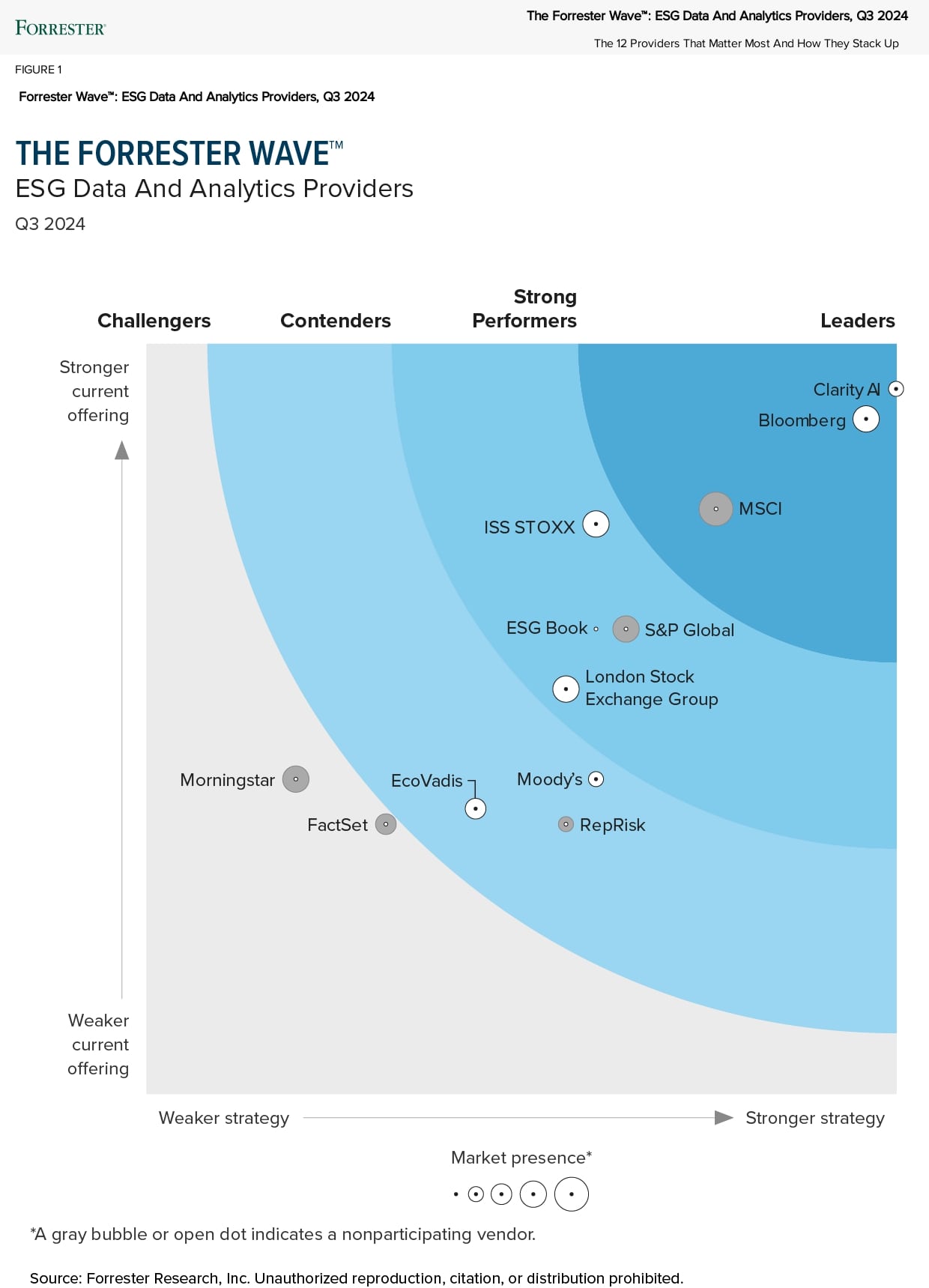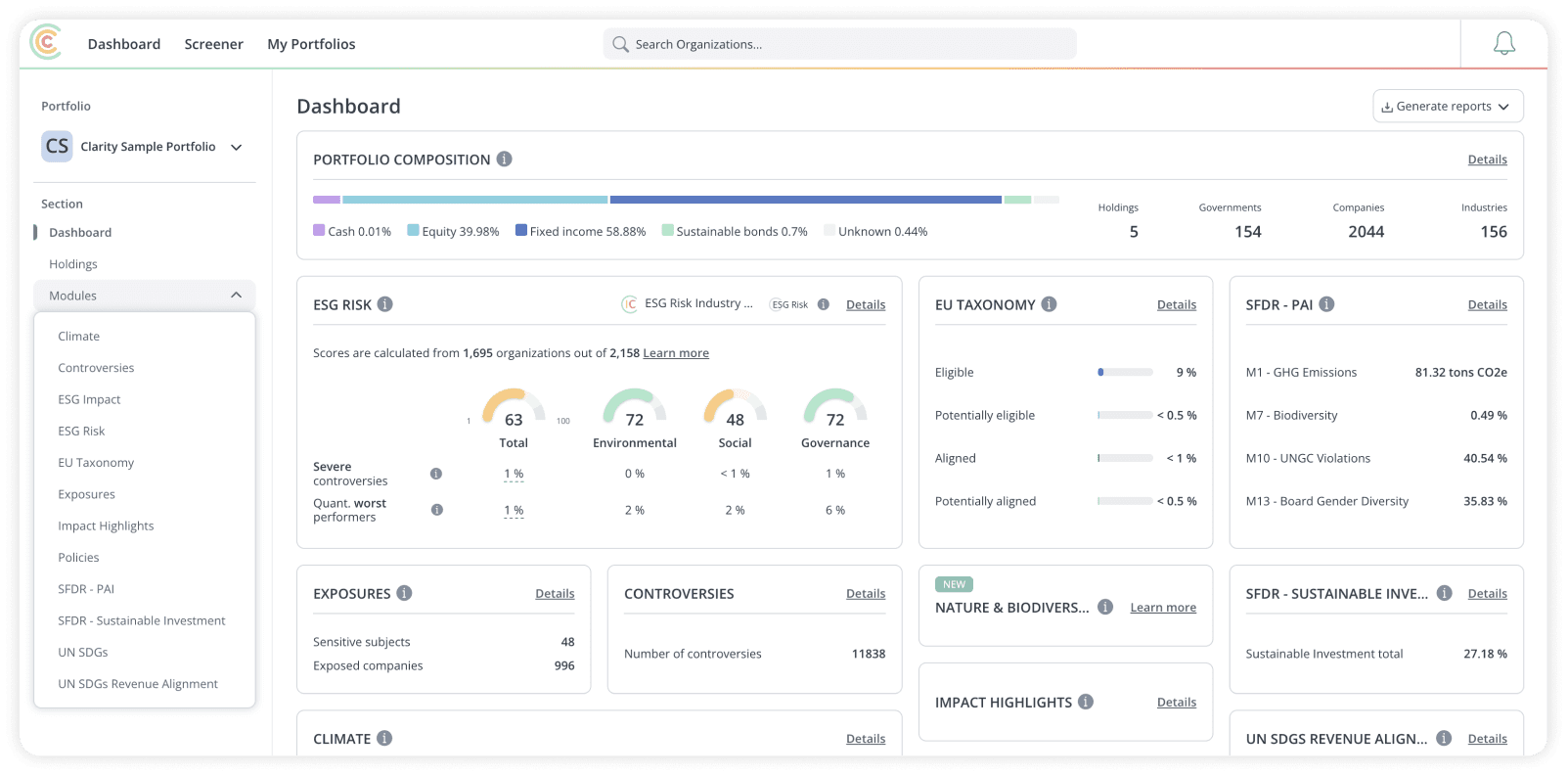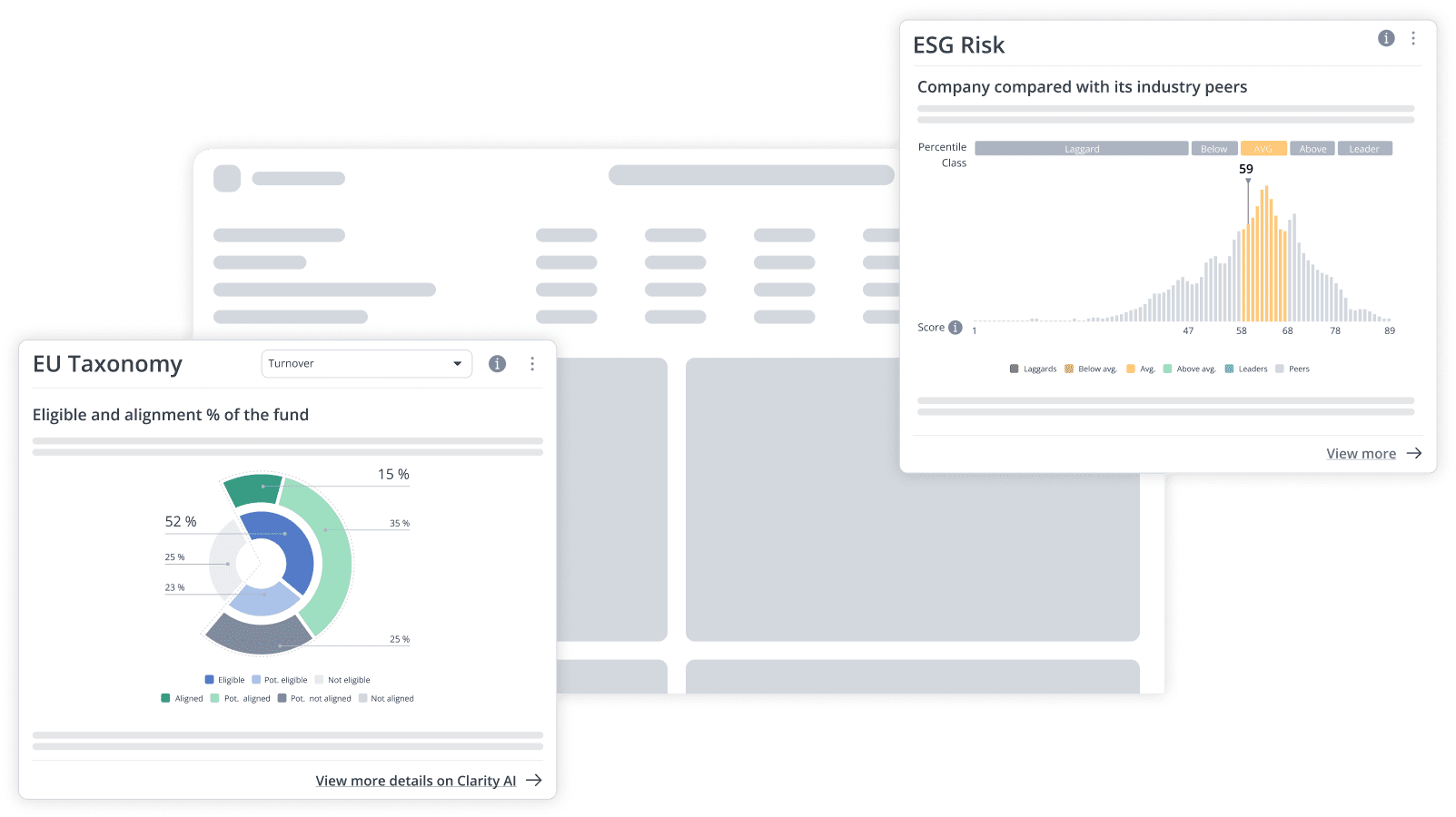A new analysis by Clarity AI’s team on sustainable funds raises concerns around disclosure levels and data quality
In our paper, SFDR: Just How Sustainable Are Article 9 Funds, we put Article 9 funds to the test. We assessed their compliance with the Sustainable Finance Disclosure Regulation (SFDR) “do no significant harm” (DNSH) criteria and found that some of these funds did not pass the test¹. Clarity AI data showed that there were Article 9 funds investing in companies with undeniable evidence of having violated the UNGC principles, as well as in companies deriving the majority of their revenues from fossil fuels.
But we were still left with the question of why: are the regulations not sufficiently clear, were fund managers not conducting enough due diligence, were they deliberately inflating their sustainability claims, or did they just have the wrong data? The continuous cadence of Article 9 downgrades to Article 8 signals that fund managers are not deliberately misleading investors (or “greenwashing”) as they appear, in fact quite the opposite, to be exercising caution in the face of uncertainty.
It also suggests that the market initially approached the gaps and uncertainty in the regulation in different ways, but that currently, the industry is adjusting to incorporate the new guidance published by regulators. This is an ongoing clarification process that has not yet finished, but in the meantime, to shed further light on our question we turned to the European ESG Templates (EETs). The EET is the standardized template developed to ensure the implementation of the SFDR and other European Regulations. Financial market participants are already using this template, so we can extract and analyze the data that fund managers are self-reporting about these Article 9 products. What did we learn through this analysis?
Lesson #1: The level of disclosure in the EETs is still very low
The EET is an industry tool developed to help financial market participants make disclosures in an easier way and it contains much of the same information as the SFDR Level 2 templates that entered into force this month. It is and will remain voluntary for asset managers to decide to fill in. Despite this, many fund managers are already submitting EETs, though the majority are not yet including granular data on Principal Adverse Impact (PAI) indicators.
We assessed ~830 Article 9 funds with EET data. At present, only 43 funds included a value for the data field “share of investments in companies that have been involved in violations of the UNGC principles of OECD Guidelines for Multinational Enterprises” and only 83 funds disclosed the share of their investments that were exposed to fossil fuels. These figures are in line with the general trend we found, the EET sections to report the PAIs contained data in less than 20% of the instances. We expect this to change as the RTS Level 2 requirements for the SFDR enter into force this year.
Lesson #2: There is a challenge with data comprehensiveness and completeness for UNGC and OECD guidelines-related violations
As mentioned previously, only 43 Article 9 fund managers reported granular information in their EET that included the fund exposure to companies with UNGC principles or OECD guidelines violations. Of them, 42 reported zero exposure; however, our data suggest that close to 60% (25 funds) are investing in at least one company involved in such violations. Examples we found included a global consumer product brand accused of having suppliers involved in human rights abuses and child labor, and a multinational aerospace corporation paying penalties for bribery charges around the world.
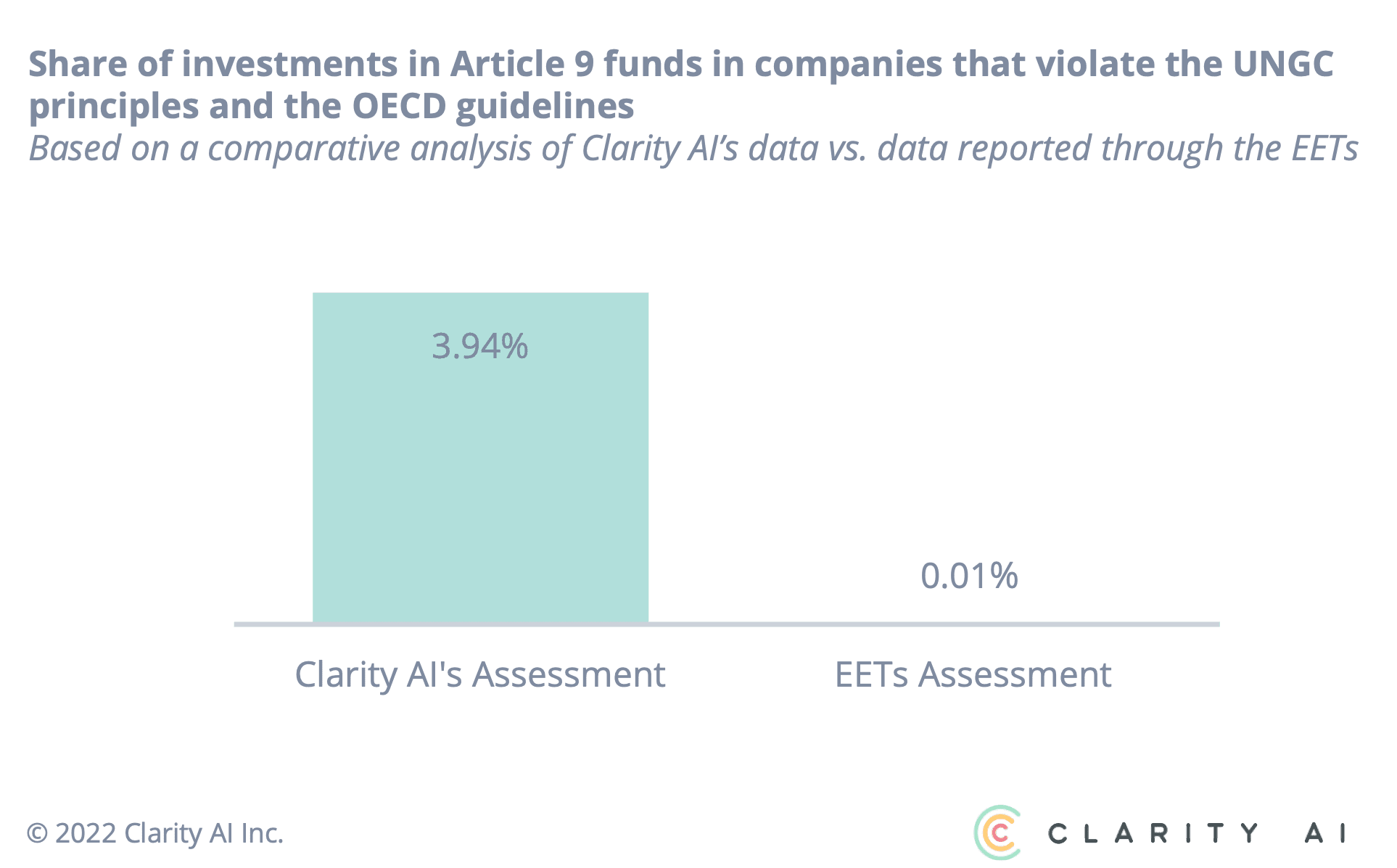
Lesson #3: One out of five Article 9 funds underreport their exposure to fossil fuels
When comparing our data with the reports from the 83 Article 9 funds that disclose this information, we find that 21% of these funds underreport their exposure to fossil fuels. On average their exposure is reported to be 4 percentage points (pp) lower than what our data shows, but the difference can go up to 13pp. Examples of companies found within these funds include electric utilities with an energy mix relying on 70% or more non-renewable energy.
It is worth noting that the funds disclosing this PAI in the EET tend to have a lower average exposure to companies in this sector than those not reporting it, based on our data (i.e., 4% vs. 5.5% exposure). Would this mean that the underreporting we found for Article 9 products will become a larger issue when more EET data becomes available? Only time will tell.

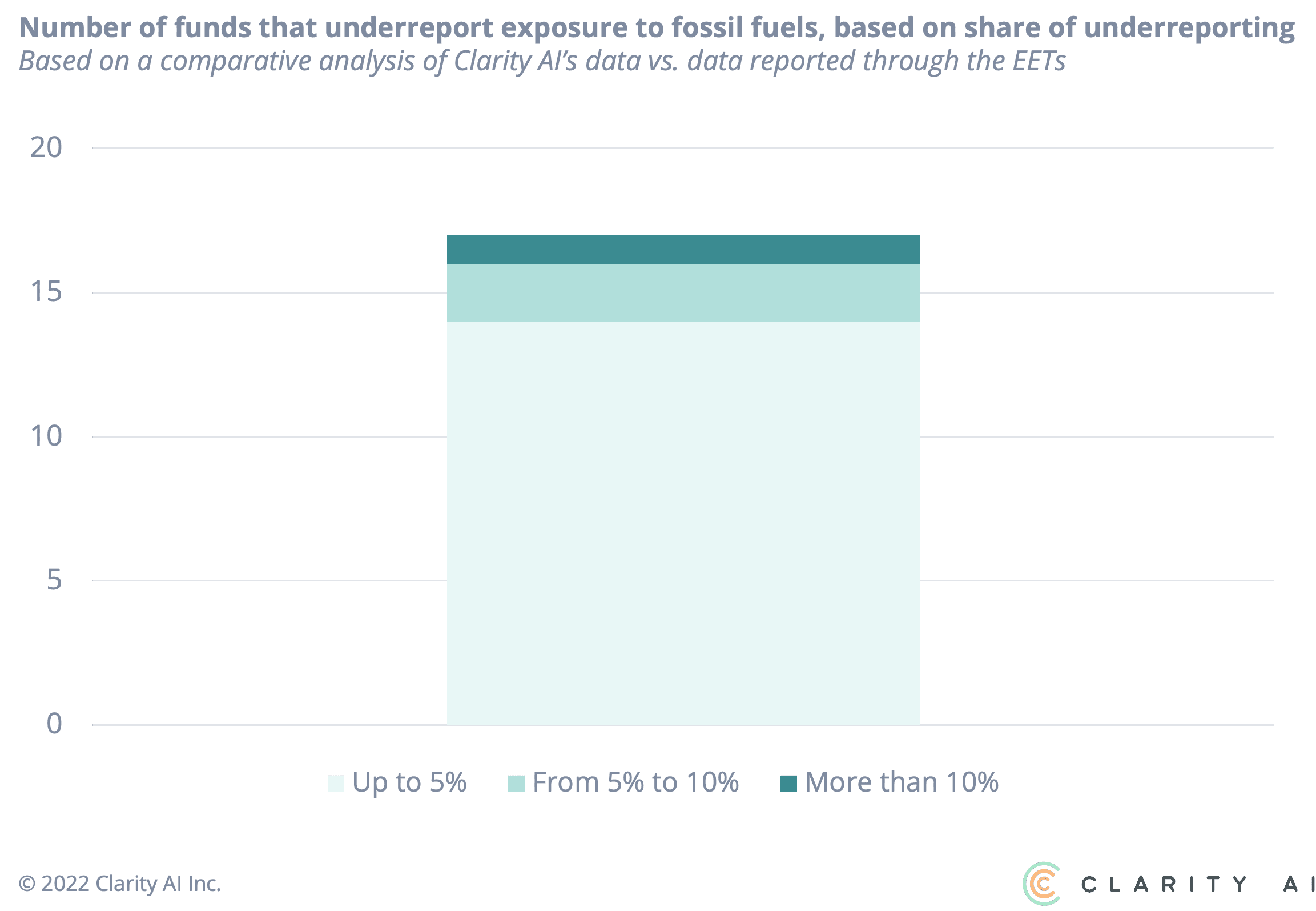
Although the EET is still being rolled out, a great deal of information can be gained through its analysis. It highlights the need for continuous clarity on the regulatory requirements of Article 9 funds, while illustrating the need for a reliable data source to uncover violations and exposures. Clarity AI’s coverage is up to 13 times more than that of other providers and gives you access to the underlying elements of each fund. Contact Clarity AI today for to learn more about our sustainable investment solution.




